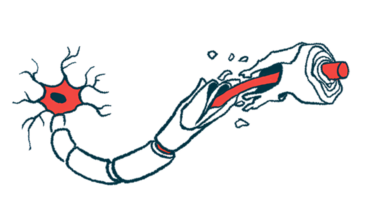Primary progressive MS can greatly reduce life quality, ability to work
German study highlights impact of slowly progressive disease on everyday life

Primary progressive multiple sclerosis (PPMS) can greatly reduce quality of life for patients and affect their ability to work, according to real-world data collected from a German MS registry.
These results “confirm the steadily deteriorating course of PPMS accompanied by increasingly limited quality of life,” researchers wrote.
The study, “The natural history of primary progressive multiple sclerosis: insights from the German NeuroTransData registry,” was published in the journal BMC Neurology.
Progressive MS symptoms gradually worsen over time
In progressive forms of MS, symptoms gradually worsen with time, even if the patient is not experiencing any relapses, or episodes when symptoms suddenly get worse.
There are two progressive types of MS: PPMS (affecting about 10%-15% of patients), in which the disease steadily progresses from onset; and secondary progressive MS, where a progressive course follows a relapsing-remitting form of MS.
Currently, Roche’s Ocrevus (ocrelizumab) is the only approved disease-modifying therapy (DMT) for people with PPMS. It works by killing antibody-producing B-cells, which are involved in the damaging inflammatory responses driving MS.
Due to the low number of patients with this progressive form, the natural history of PPMS remains poorly understood.
To shed light on this, researchers at NeuroTransData (NTD) — a Germany-wide network of neurologists and psychiatrists — and Roche analyzed data from the German NTD MS registry.
The registry’s database contains real-world data, including demographic and clinical information, from about 25,000 MS patients followed at 56 clinics.
Although the overall population has shown a rather slow progressing course of disease, the data collected underline the significant impact on patients’ everyday life which is reflected in the reduced quality of life and impaired ability to work reported by PPMS patients.
Researchers analyzed data from 1,168 PPMS patients in registry
The researchers focused on the 1,168 PPMS patients participating in the registry by January 2021, representing 5% of all 23,356 participating MS patients. They conducted two types of analysis: cross-sectional, which uses data collected at a specific point in time; and longitudinal, with data collected over an extended period of time.
The cross-sectional analysis included the 481 PPMS patients with a last visit in the period from 2019 until January 2021. Their mean age was 60.5 years and more than half were women (59.9%).
The first symptoms arose at a mean age of 43.3 years and patients were diagnosed with PPMS a mean of 3.2 years thereafter. A total of 12.9% of patients were previously diagnosed with relapsing-remitting MS.
By January 2021, 18.5% were being treated with Ocrevus, and 16.4% of patients had previously received off-label treatment with at least one DMT.
Patients’ disability was assessed with the expanded disability status scale (EDSS), whose scores range from zero to 10, with higher scores indicating greater disability.
The median EDSS score was five, meaning that disability affected patients’ ability to do daily activities. Walking skills were the most affected, followed by pyramidal functions, which evaluates muscle weakness and moving difficulties.
Overall health was evaluated using the European Quality of Life 5-Dimensions 5-Level questionnaire (EQ-5D-5L), which includes assessments on mobility, self-care, usual activities, pain/discomfort, and anxiety/depression. The score goes up to one, corresponding to the best possible health state; scores below zero reflect the worse possible state.
Patients had a median EQ-5D-5L score of 0.6, with moderate to severe impairments in mobility seen in 38.5% of patients, followed by usual activities (30.8%), and pain and discomfort (28.4%). A total of 12.1% were given pain medications, and 9.1% antidepressants.
The longitudinal analysis included patients who had not received any DMT and focused on how EDSS scores changed over 10 years.
EDSS scores increased over time, indicating greater disability
Results showed that EDSS scores increased over time, from a mean of 4.6 at the time of diagnosis or first assessment to 5.7 after a decade. During this period, the number of patients on self-reported disability pension increased from 18.9% to 33.3%.
Further analyses showed that patients took a median of 6.9 years to reach an EDSS score of four or higher, reflecting relatively severe disability, and a median of 16.3 years to reach a score of seven or higher, indicating that, at minimum, they became restricted to a wheelchair.
On average, it took 9.7 years for a quarter of the patients to reach an EDSS score of seven or higher.
Subgroup analyses of patients up to 55 years of age versus older patients showed no significant differences in the time it took for them to reach an EDSS score of four or higher, or seven or higher.
In summary, “although the overall population has shown a rather slow progressing course of disease, the data collected underline the significant impact on patients’ everyday life which is reflected in the reduced quality of life and impaired ability to work reported by PPMS patients,” the researchers wrote.
“There is still a high unmet medical need for disease modifying therapies in progressive MS and despite of limitations the collection of real-world data contributes to a better understanding of long-term disease progression and possible impact of emerging therapies,” they concluded.








